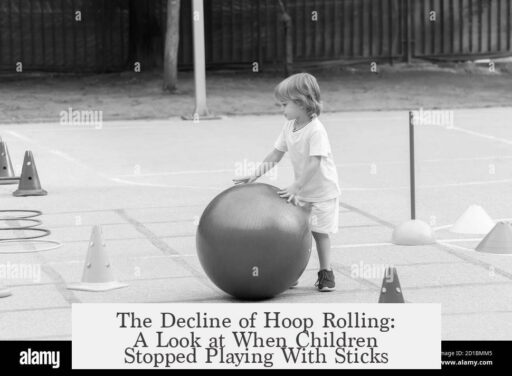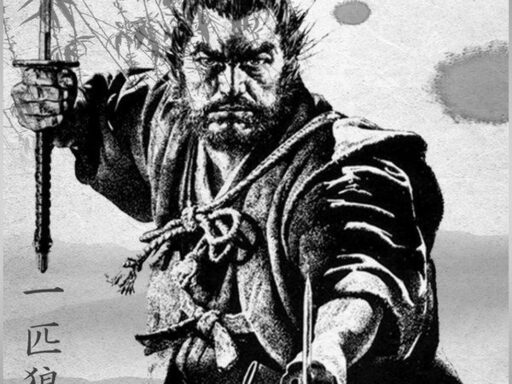Children stopped rolling hoops with sticks at different times depending on the region and culture, but there is no precise date marking the end of this practice. Historical records rarely specify exact periods for when such games ceased. The activity gradually declined as new forms of entertainment and toys emerged, particularly during the 20th century.
Rolling hoops with sticks was a widespread pastime in many cultures for centuries. It involved using a stick to guide or roll a large metal or wooden hoop along the ground. This simple game required minimal equipment and could be played individually or in groups. Its popularity made it a staple of children’s outdoor play.
Several reasons contribute to the difficulty in pinpointing when the game died out:
- Historical observers often overlooked children’s games, considering them trivial and not worthy of detailed recording.
- Documentation of children’s activities was inconsistent, focusing more on adult history and formal social records.
- Cultural shifts and technological advances introduced new toys, reducing reliance on traditional games like hoop rolling.
By the mid-20th century, urbanization and the spread of electronic entertainment reduced outdoor street play. Toys such as bicycles, balls, and later video games took precedence. As a result, rolling hoops with sticks grew less common, disappearing from many areas.
In some rural or less industrialized regions, this activity may have persisted longer. Still, it is largely regarded as a historical pastime rather than an ongoing children’s game today.
Key takeaways:
- No exact date exists for when rolling hoops with sticks ceased as a common children’s game.
- Lack of detailed historical records on children’s play limits knowledge about specific timelines.
- The activity declined mainly during the 20th century due to changing entertainment and lifestyle.
- Modern toys and electronic media largely replaced this traditional game.
When Did Children Stop Rolling Hoops with Sticks?

Children stopped rolling hoops with sticks gradually as modern entertainment options arose, but there is no single date marking the end of this delightful pastime. The disappearance of hoop rolling from children’s games feels less like a sudden stop and more like an old song fading out. The tradition has billions of years of history—well, maybe not billions—but it sure seems ancient!
Let’s travel through time and find out when kids put down their sticks and stopped chasing those hoops.
Hoop Rolling: A Truly Global Game
Imagine children from continents apart rolling hoops with sticks—this was a truly worldwide practice. Native American groups like the Arapaho and Pawnee loved hoop rolling. It wasn’t just them; Japan, Tanzania, and even Freetown saw youngsters playing similar games.
Back in the 19th century, Massachusetts children seemed obsessed with hoops and sticks. A survey of 1,000 kids in 1898 showed it was the favorite toy. Yes, before video games, before smartphones, kids were fiercely competitive… with hoops!
And it turns out the Greeks and Romans enjoyed hoop rolling too. Travelers on the Oregon Trail carried the tradition westward. In other words, hoop rolling survived migrations, cultures, and centuries.
More Than One Way to Play
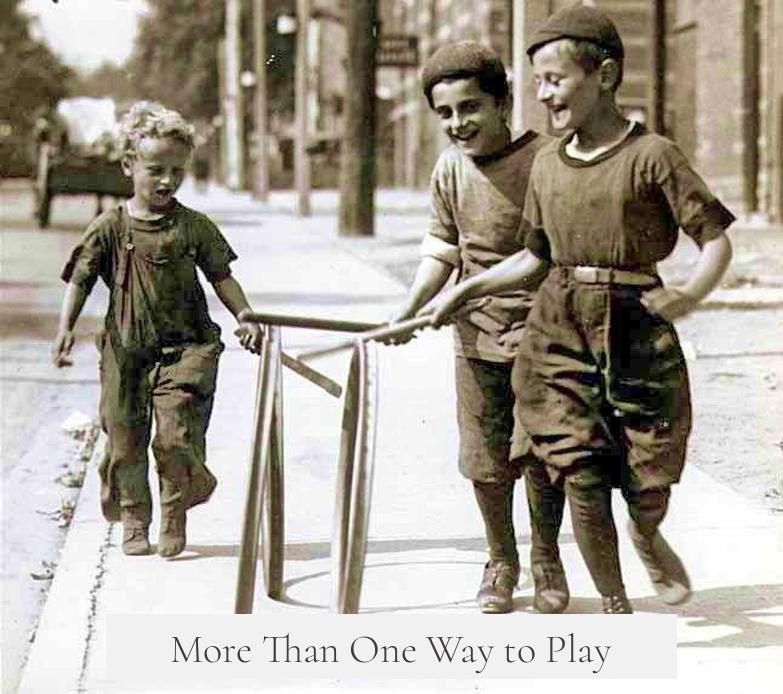
Hoop rolling came in a couple of different flavors.
- Using a Stick to Propel the Hoop: Kids took sticks and carefully hit their hoops near the top, keeping the circular friends rolling smoothly along the ground. Experts from Montgomery County’s Parks and Trails Department even have videos mastering this art.
- Throwing a Spear or Stick Through the Moving Hoop: Some versions elevated the challenge—imagine rolling a hoop and tossing a stick or spear right through it as it rolled. The Chumash Indian Museum shares how this was done, and it sounds like a real test of skill.
This shows hoop rolling wasn’t dull—it was a game of skill, timing, and maybe a little friendly rivalry.
Who Played and How Long Did It Last?
Both boys and girls played, proving hoop rolling cut across gender lines. Interestingly, the game lingered longer with girls. Some women’s colleges—Bryn Mawr, Wellesley, and Wheaton—kept the tradition alive with hoop rolling competitions well into the 20th century.
For example, at Wellesley College, hoop rolling races were part of campus culture. Even in 1990, Barbara Bush mentioned the hoop race in a commencement speech. She joked:
“For over 50 years, it was said that the winner of Wellesley’s annual hoop race would be the first to get married. Now they say the winner will be the first to become a C.E.O.”
This shows hoop rolling persisted in niche pockets beyond childhood playgrounds—more proudly in women’s colleges as a tradition and competition.
So, When Exactly Did Hoop Rolling Fall Out of Favor?
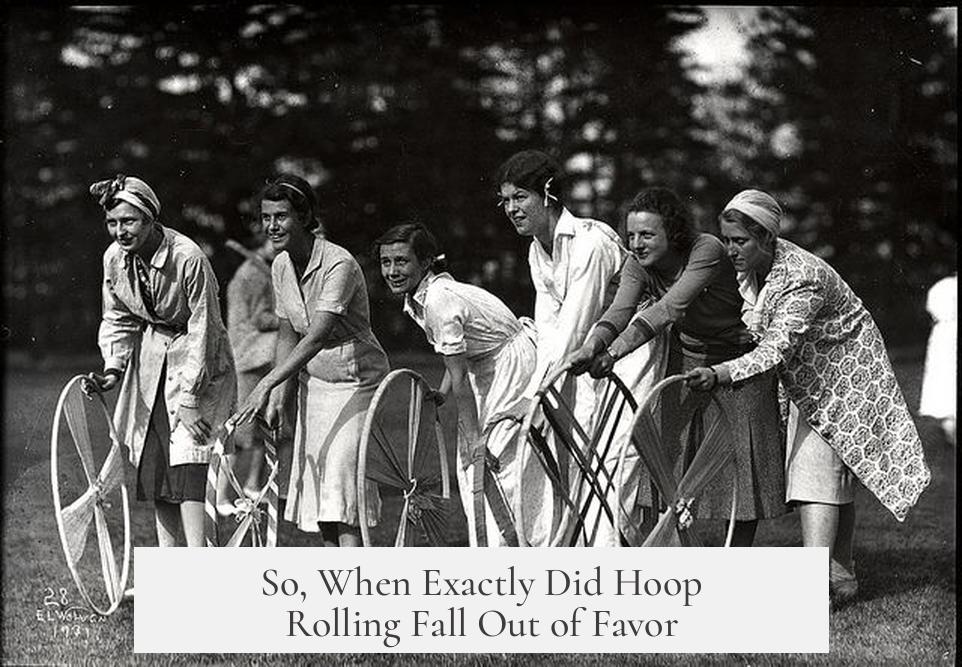
This is where the trail grows murky. Surprisingly, no clear date marks the end of hoop rolling’s popularity. Scholars, historians, and playful internet enthusiasts alike struggle to pin down exactly when kids stopped chasing hoops with sticks.
u/EdHistory101, a Reddit user with a knack for historical insight, points out why this gap exists: children’s play doesn’t usually get the spotlight in historical records. People often ignored what kids did for fun, seeing it as trivial. If records exist, they might not specify when a game started or ended.
The slow disappearance of hoop rolling likely coincides with the rise of modern toys and recreational activities. As urbanization spread and technology evolved, children found new amusements—bicycles, radio, television, video games—that gradually edged out simpler games like hoop rolling.
By the mid-20th century, when sports and organized activities grew common, hoop rolling’s popularity waned in general public spaces, surviving mainly in specialized contexts like women’s colleges.
Why Did Hoop Rolling Decline?
Consider this: hoop rolling requires space, coordination, and a certain kind of patience. Modern childhood accelerated towards faster, more complex entertainments that don’t demand chasing after a rolling hoop or mastering the stick’s rhythm.
Moreover, societal shifts played a role. With increased safety concerns, less unsupervised playtime, and a move indoors, outdoor physical games like hoop rolling saw less participation. Kids needed a reason strong enough to abandon screens, and hoop rolling just wasn’t trending enough.
Could Hoop Rolling Make a Comeback?
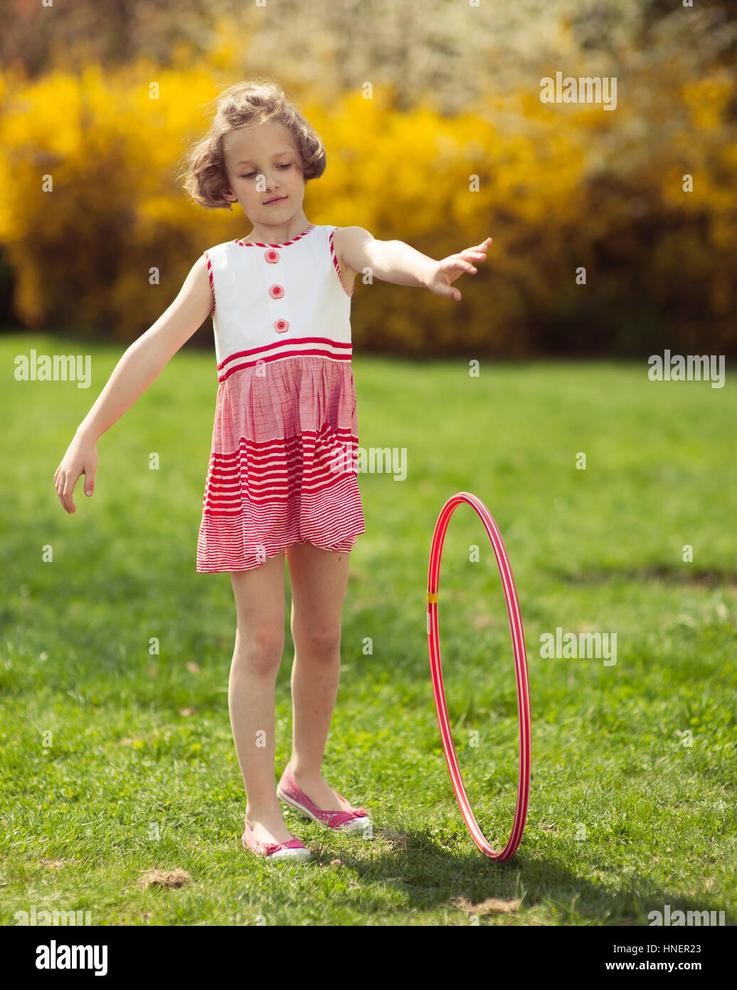
Maybe the spirit of hoop rolling lives on, just under new forms. Hula hoops and rollerblades carry echoes of chasing fun with wheels and circular motion. Plus, the legacy remains in that quirky Wellesley competition, where hoop rolling still sparks smiles and friendly rivalry.
It’s worth asking: In today’s digital frenzy, could reviving simple, skill-based outdoor games like hoop rolling bring balance and joy? Sometimes, going back to basics is a fresh way forward.
Wrapping Up the Hoops
So, what have we learned? When did children stop rolling hoops with sticks? There’s no exact answer. It slipped away softly, riveted through centuries and cultures, rarely chronicled in history books.
From Native American tribes to ancient Romans, from 19th-century Massachusetts kids to 20th-century women’s colleges, hoop rolling spun through lives and landscapes. It’s a tribute to a simpler kind of childhood fun.
Next time you see an old bicycle tire or a sturdy stick, maybe consider giving hoop rolling a try. Who knows? You could spark a revival of the classic game and remind the world how fun it is to make simple things roll.
